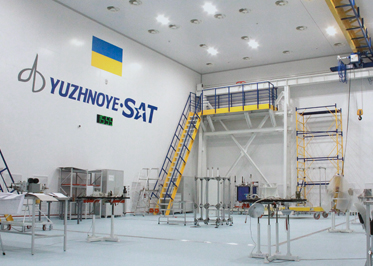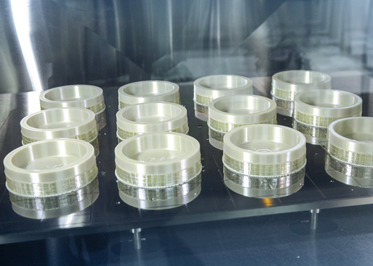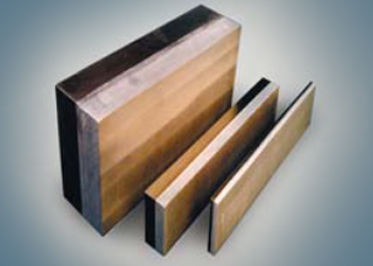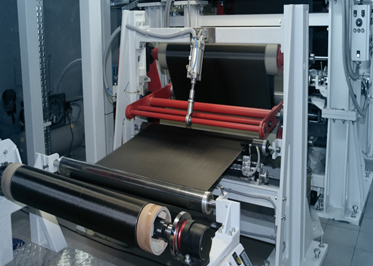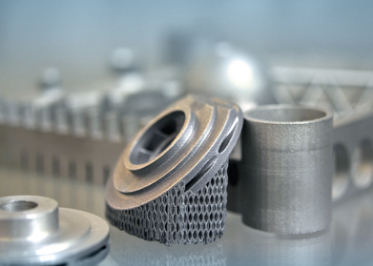Services
Services
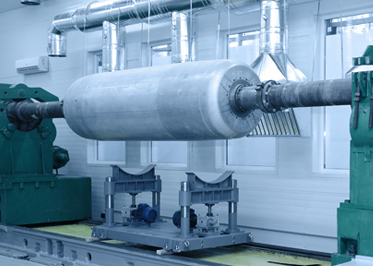
Project description
Thermal protection coatings
The internal heat-resistant coating developed from calendered rubber compounds and designed to protect the motor body from thermal effects during the combustion of solid propellant products. The heat-resistant coating is manufactured by layering with subsequent vulcanization as part of the product.
INTERNAL HEAT-RESISTANT COATING SPECIFICATIONS
| Density, not more than, g/cm3 | 1,02-1,08 |
| Conductivity factor, not more than (W/kg·K) | 0,244 |
| Specific heat, not less than, J/(kg·K) | 1,467 |
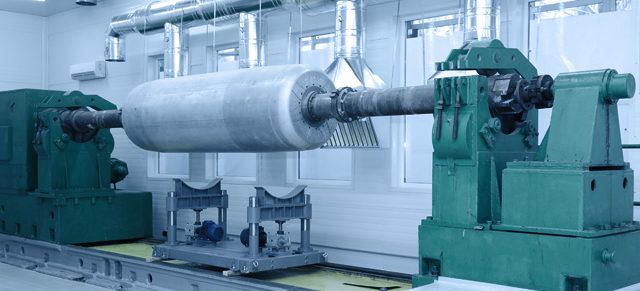
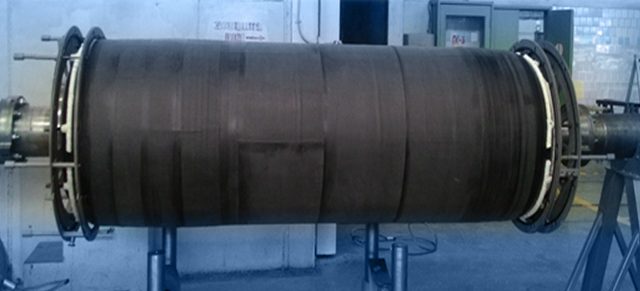
A thin-layer heat-resistant coating to protect the launch vehicle exterior surface is developed from aqueous polyurethane dispersions, microspheres, fire retardants, and a number of other additives. Pneumatic spraying is the main method of applying a liquid composition of the exterior heat-resistant coating.

EXTERIOR HEAT-RESISTANT COATING SPECIFICATIONS
| Density, g/cm3 | 0,4-0,55 |
| Coating working thickness, mm | 0,5-18,0 |
| Tensile breaking strength, MPa | 2.0 |
| Conductivity coefficient, W/(m·K) | 0,1 |
| Specific heat, kJ (kg·K) | 1,6 |
| Initial decomposition temperature, °С | 230 |
| Maximum decomposition temperature (ablation), °С | 600 |
The ceramic-metal (sintered) heat-resistant coating is designed to protect a liquid-propellant rocket engine turbine flow section. The coating is a composition based on glass, metal and silicon, highly resistant to almost all corrosive environments and characterized by high strength, wear resistance, hardness, low density and stable mechanical properties over a wide temperature range. The coating is applied as a slip mass to the protected surface, which is followed by heat treatment.
CERAMIC-METAL HEAT-RESISTANT COATING OPERATING ENVIRONMENT
| Excess oxygen in high-temperature generator gas, % (in terms of mass) | 98-99 |
| Gas temperature, °С | 85-600 |
| Gas pressure, kgf/cm2 | 100-500 |
| Gas velocity, m/s | 50-515 |
| Permissible operating temperature, °С | ‒ 155 to + 900 |
Related projects
https://lingkungan.ft.unand.ac.id/id/program-gsgs/
https://www.golfchannel.co.th/tv-schedule/
http://www.eiar.gov.et/contact/
https://www.iimmkolkata.com/dmlm/
https://autocaravanasgayo.com/servicios/
https://laboutique.jormax.com/loja/millenium/
https://behzadiplastics.com/contactus/
https://joadahconsult.com/team_design/
https://www.visitasguiadastui.com/tour-item/tui-historico/
https://institutoebenezer.net/evento/united-states-independence-day
https://navesa.com.br/contato/
https://www.fc-ekeren.be/kalender/
https://colsadav.org/profesores/
https://www.rmragman.authorsbreeze.com/contact-us/
https://www.internacionaldvdspain.com/articles/decoracion/
https://exin.se/flytt-och-transport/
https://www.qlmagic.com/turn_structure/
https://www.saborlatino.jp/categoria-produto/22000/
https://publicistpaper.com/contact/
https://seocompany.us.com/portfolio/
https://atharveducation.com/bds.php/
https://www.casacarbone.com/fdm-menu-section/entrees/
https://www.iti.edu.pa/engine/
https://www.shortcuts.es/soluciones/software-peluqueria/
https://odin.rvbar.ru/poster/vorovayki/
https://newnoardicwave.com/privacy-policy/
https://www.envision-plus.co.th/
https://cbdconsulting.com/technology/tinkercad/
https://learningsessions.in/caiib-exam-date/
https://www.shortcuts.es/demos/
https://atlpanama.com/contactenos/
https://einkaufsgemeinschaft.agritec.at/aktionen/
https://thecolorrun.pt/pt/about/
https://odin.rvbar.ru/restoran/
https://alejandrodavidovich.com/
https://mycreativitymypower.eu/
https://fineline.uk.com/modelmaking/
https://yvonnedme.com/premier-bet-zone-mobile/
https://navesa.com.br/politica-de-privacidade/
https://lyon.snuep.fr/category/mutations/intra/
https://cucgachcafe.com.vn/luong-minh-phuong-la-ai/
https://www.booksarepopculture.com/
https://tunaskaryajakarta.sch.id/
https://www.visitasguiadastui.com/contacto/
https://www.vizgraphics.com/showcase/
https://jdi.ac.ug/application/
https://www.kiadesivo.com.br/contato/
https://www.kiadesivo.com.br/obrigada-pela-compra/
https://www.kiadesivo.com.br/politica-de-privacidade/
